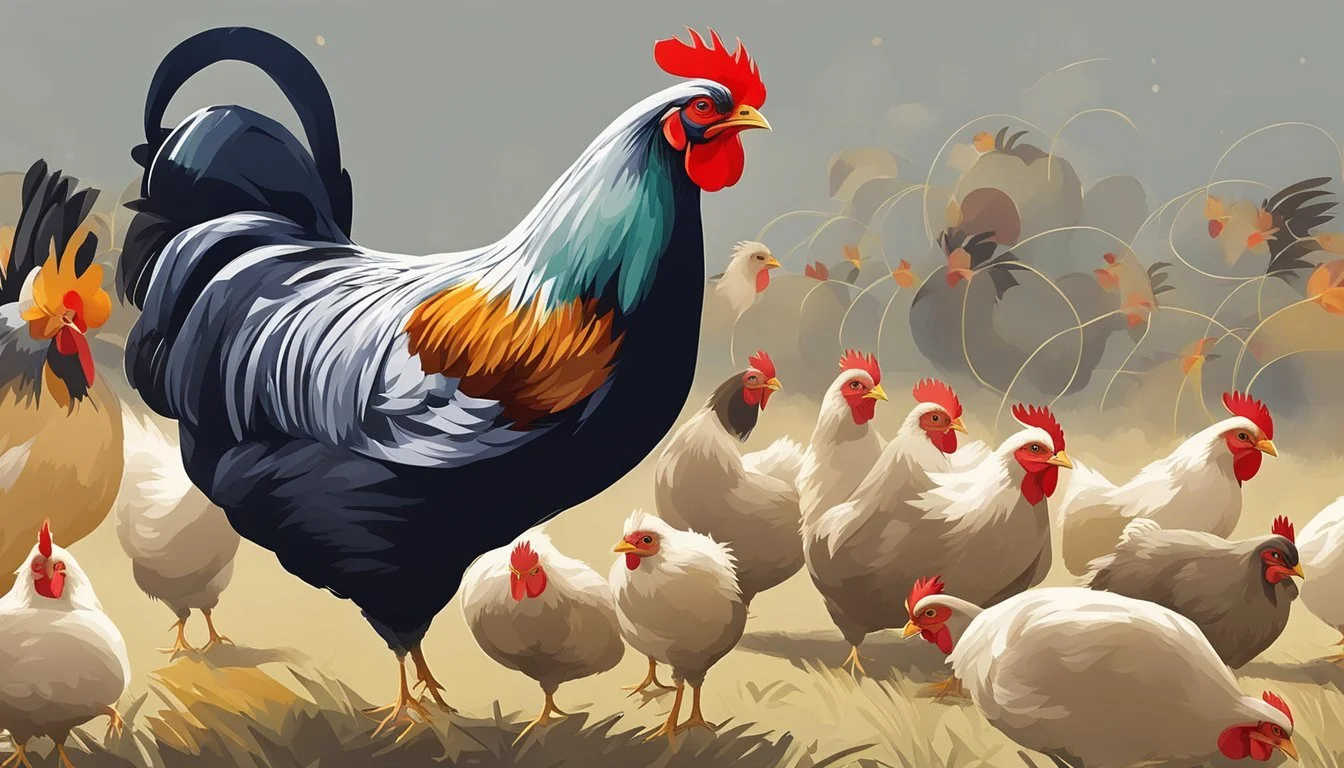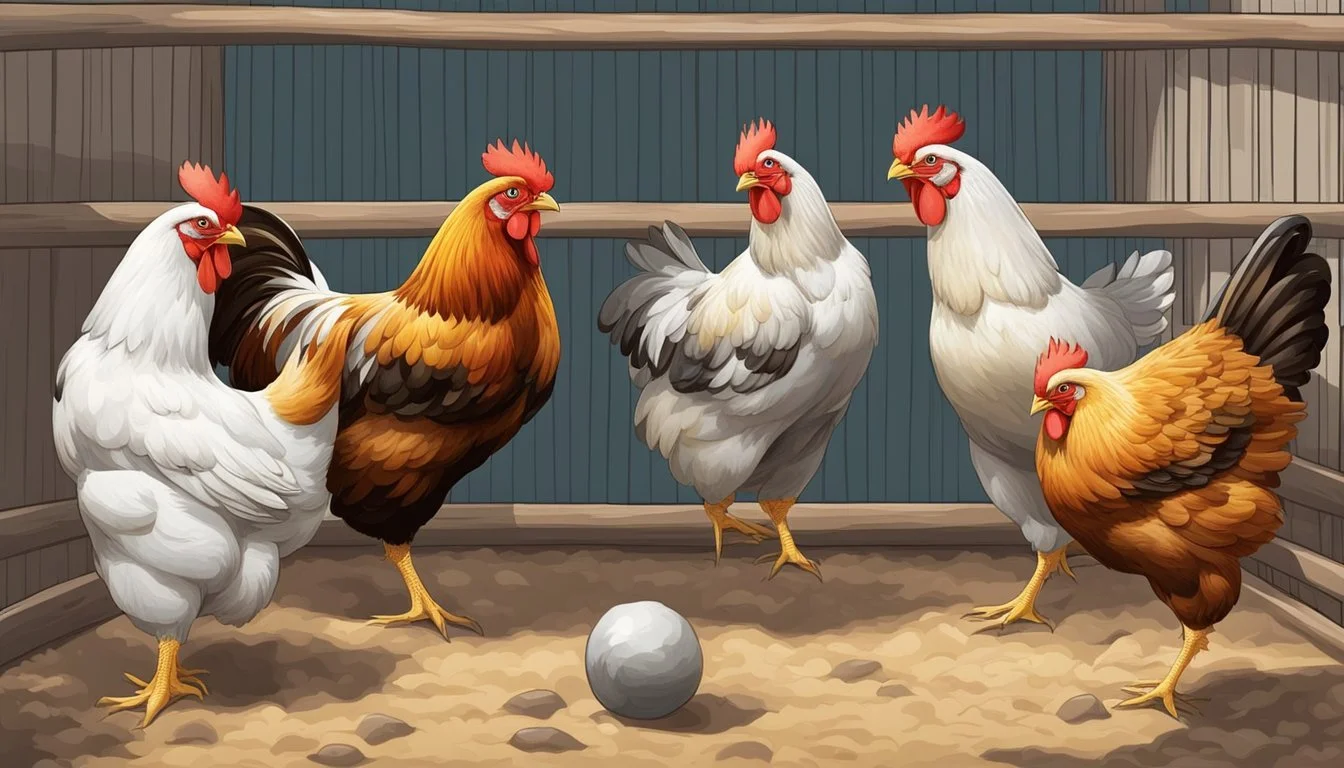Can Chickens Be Trained?
Understanding Avian Learning Capabilities
Chickens, often regarded as simple farm animals, possess a surprising capacity for learning and can indeed be trained. Contrary to common belief, they have an awareness and adaptability that allows them to learn routines and perform tasks. With the right techniques, chickens can be guided to execute an array of actions such as coming when called, navigating through obstacle courses, and even performing simple tricks.
Training chickens involves a process of positive reinforcement where desirable behavior is rewarded. Essentials for training include patience, consistency, and an understanding of chicken behavior. Owners who invest time in training can enhance their interactions with their flock and streamline their daily chicken management practices.
A trained chicken can improve a coop's harmony and the overall well-being of the flock by reducing chaotic behavior and establishing clear routines. This training not only benefits the owners in terms of flock management but also provides mental stimulation for the chickens, contributing to a more robust and contented flock.
Understanding Chicken Behavior
Chickens are complex creatures with distinct behaviors that are crucial to understand when one aims at training them effectively. Recognizing their communication cues, social order, instinctual behaviors, and capacity for learning is pivotal for any backyard chicken keeper.
Communication and Social Structure
Chickens convey a lot through their sounds and body language, asserting a complex social structure within the flock. They utilize a variety of vocalizations to signal everything from the discovery of food to the presence of predators. A certain pecking order is established in which ranking can affect access to food, mates, and nesting boxes. This hierarchy helps maintain order and reduce conflicts within the coop.
Natural Instincts and Adaptability
Despite domestication, chickens retain strong instincts that can be observed in their behavior. They have an inherent desire to forage for food, take dust baths to maintain feather health, and seek high roosting spots to avoid predators at night. Adaptability in chickens can be seen in how they adjust to backyard environments, though they are naturally cautious of new changes within their habitat.
Learning and Mental Stimulation
Chickens have the ability to recognize shapes and can be mentally stimulated through training, which promotes a positive well-being. Training chickens with consistent actions can lead them to associate certain sounds or gestures with activities like feeding or returning to the coop. Regular mental stimulation is necessary not only for behavioral training but also for preventing boredom and vices that can arise in confined spaces.
Fundamentals of Training Chickens
Training chickens successfully hinges on understanding their behavior and employing the right techniques. Two critical elements are crucial for success: consistency and offering rewards that motivate chickens effectively.
Importance of Consistency and Patience
Consistency serves as the backbone of training chickens. A trainer must be regular with the training sessions and maintain uniform signals and cues throughout the process. The repetition of these signals paired with patience fortifies learning and helps chickens understand what is expected of them. Patience proves especially important due to the natural variation in individual chickens' learning speeds and abilities.
Positive Reinforcement Techniques
Positive reinforcement is a technique wherein a chicken receives a reward after performing a desired behavior. This method capitalizes on rewarding good behavior rather than punishing undesirable acts. Positive reinforcement encourages the chicken to repeat the behavior in the future in anticipation of another reward.
Using Treats as Motivation
Treats are the primary form of motivation when it comes to training chickens. Chickens are more likely to follow through with a task if they know a favored snack awaits them. Common treats that prove effectual include:
Fruits: Apples, berries
Vegetables: Lettuce, peas
Grains: Oats, wheat, rice
Dried mealworms
Bird seed
Using treats strategically ensures that chickens associate the positive action with the reward, thereby reinforcing the training process.
Basic Chicken Training Exercises
Training chickens can be both rewarding and practical. By using consistent techniques and positive reinforcement, owners can teach their chickens a variety of useful behaviors. Here are some basic training exercises that can help enhance the bond between you and your flock, as well as improve their well-being and adaptability.
Teaching Chickens to Come When Called
Trick: Creating a vocal or sound cue.
Start by choosing a consistent sound or word.
Use treats to reinforce the chickens coming to you upon hearing the cue.
Litter Box Training
Training: Chickens can be potty trained to some extent.
Place a litter box in a preferred spot where chickens tend to poop.
Positive reinforcement can encourage them to use the box regularly.
Getting Chickens to Follow You
Training: Chickens can learn to follow their owners.
Use a treat held in your hand to guide them.
Start with short distances and gradually increase as they learn.
Target Training for Mental Engagement
Mental stimulation: Engages the chicken's natural pecking behavior.
Utilize a target stick or a finger to direct the chicken's pecking.
Reward the chicken for touching the target to encourage repetition.
Recognizing and Responding to Shapes
Training chickens: Chickens have the ability to recognize different shapes.
Introduce shapes associated with specific rewards.
Incrementally train them to peck at certain shapes for treats.
Advanced Chicken Training Techniques
Advanced chicken training techniques have evolved significantly, demonstrating that chickens are capable of learning a variety of tricks and behaviors. By utilizing consistent training methods and positive reinforcement, one can teach chickens complex tasks, enhancing their mental stimulation and strengthening human-animal bonds.
Obstacle Course and Agility Training
One can create an obstacle course tailored for chickens that instills various agility skills. It may include bridges, ramps, and hoops. Chickens are encouraged to navigate these obstacles, often with the enticement of treats. As they progress, these feathered students can learn to master more intricate agility courses, displaying impressive dexterity.
Training Chickens to Be Picked Up
Training chickens to be picked up without resistance is crucial for their handling and care. This begins with associating the act of being lifted with positive experiences, such as receiving their favorite treats. With time and patience, chickens can learn to approach and offer themselves to be picked up by their caretaker.
Using Sound and Musical Instruments
Incorporating sound and basic musical instruments into training can enhance a chicken’s response to commands. By associating certain sounds with specific actions, they learn to perform tricks or behaviors on cue. For example, a particular whistle or instrument note can signal a chicken to come to their handler or start a particular action.
Training with a Chicken Harness
Using a chicken harness can facilitate outdoor walks and adventures, allowing chickens to safely explore new environments. The key to harness training lies in gradual acclimation, ensuring that the chicken is comfortable and secure. The harness allows for an extension of training possibilities, including leash walking.
Creating a Supportive Training Environment
Creating a supportive training environment is essential for effective chicken training. It involves constructing a space where chickens feel safe and have the necessary facilities to both rest and engage actively during training sessions.
Safe and Chicken-Friendly Space
A critical aspect of training chickens is ensuring they are housed in a coop that protects them from predators and provides a comfortable space. The coop should be surrounded by a sturdy fence to confine the chickens safely within their designated area. This not only keeps them safe but also helps to establish a consistent training area where they feel secure and are more receptive to learning.
Adequate Perches and Nesting Areas
Chickens have a natural instinct to roost on perches. Providing multiple perches of varying heights helps satisfy this need and serves as a vantage point for the flock to observe their surroundings. Additionally, ample nesting boxes should be provided to offer a comfortable spot for laying eggs, which can also be incorporated into the training by encouraging the chickens to use these areas with positive reinforcement.
Using Mirrors for Training and Stimulation
Incorporating a mirror into the chicken coop can be a unique tool for training and stimulation. Chickens are often fascinated by their own reflections, and a mirror in the coop can encourage natural behaviors that may be beneficial during training sessions. By understanding and utilizing a chicken's curiosity, trainers can enhance the overall training experience and keep the birds mentally stimulated.
In a well-prepared environment that includes these considerations, training chickens can be a more successful and rewarding experience for both the trainer and the birds.
Challenges and Solutions in Chicken Training
Training chickens can be rewarding, yet it presents unique challenges that demand effective solutions. With proper techniques focused on behavior, motivation, and mental stimulation, trainers can overcome these hurdles. Consistency and a structured schedule are crucial in this process.
Addressing Behavioral Issues
Behavioral issues in chickens may stem from their instinctual responses, complicating training efforts. To counteract this, trainers should employ positive reinforcement as a pivotal strategy. Rewarding desired behavior with treats motivates chickens and gradually shifts their natural instincts towards the actions trainers seek. The approach of operant conditioning reinforces desired behaviors effectively.
Keeping Training Sessions Engaging
To secure the attention of chickens and keep them engaged, sessions must be short and dynamic. Incorporating a variety of exercises that provide mental stimulation ensures chickens remain interested. Trainers can introduce new tricks after mastering previous ones, as suggested by The Pioneer Chicks, to keep training refreshing and challenging.
Maintaining a Structured Training Regimen
Consistency is fundamental in chicken training. Developing a regular schedule that chickens can anticipate reinforces routine and aids in solidifying learned behaviors. A structured training regimen, as detailed by Hobby Farms, should blend consistent timing with varied tasks to promote continual improvement without inducing boredom in the birds.
Conclusion
Chickens possess the ability to learn a variety of tasks and behaviors through training. It has been shown that with positive reinforcement, such as providing food treats, these birds can be taught to respond to commands and even perform simple tricks. The key components to successful training of chickens involve consistency in approach and a degree of patience from the trainer.
Positive Reinforcement: By employing rewards, chickens associate the given instruction with a positive outcome, thereby increasing the likelihood of repeating the desired behavior.
Consistency: Regular training sessions enable chickens to understand and remember the tasks being taught.
Patience: Not all chickens learn at the same pace; trainers must be willing to invest time for each chicken to reach its potential.
The training process can not only enhance the chickens' quality of life but also solidify their bond with their human caretakers. It is vital, however, to have realistic expectations regarding the complexity of the tasks chickens can perform.
In essence, they are capable of much more than many would assume, and it is this surprising adaptability that makes them interesting and engaging companions. Whether it’s for practical purposes like coming when called or for interactive enjoyment such as performing tricks, training chickens can be both rewarding and beneficial for the birds and their owners.




